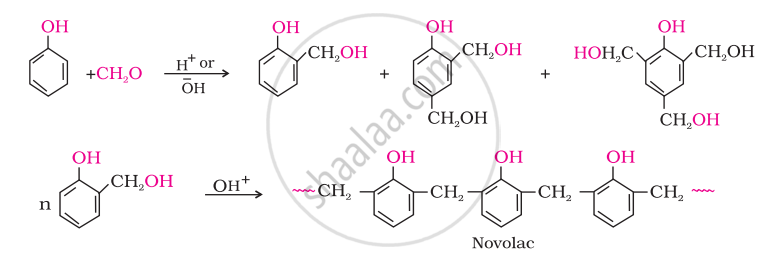Advertisements
Advertisements
प्रश्न
Phenol and formaldehyde undergo condensation to give a polymar (A) which on heating with formaldehyde gives a thermosetting polymer (B). Name the polymers. Write the reactions involved in the formation of (A). What is the structural difference between two polymers?
उत्तर
Phenol–formaldehyde polymers are the oldest synthetic polymers. These are obtained by the condensation reaction of phenol with formaldehyde in the presence of either an acid or a base catalyst. The reaction starts with the initial formation of o-and/or p-hydroxymethyl phenol derivatives, which further react with phenol to form compounds having rings joined to each other through –CH2 groups. The initial product could be a linear product – Novolac
Novolac on heating with formaldehyde undergoes cross-linking to form an infusible solid mass called bakelite. It is used for making combs, phonograph records, electrical switches and handles of various utensils.
'A' is Novolac and 'B' is Bakelite.


APPEARS IN
संबंधित प्रश्न
Monomer used for preparation of polyacrylonitrile is _____________
Write preparation of low density polythene.
Identify the polymer obtained by polymerization of n moles of acrylonitrile.
Which among the following polymers is obtained from CH2 = CH – CN by polymerisation?
Identify the catalyst used in the manufacture of high density polythene.
Which among the following polymers is an example of addition polymer?
Trans - form of poly isoprene is:-
Match the following pairs:
| Polymer | Monomer | ||
| (i) | Teflon | (a) | CH2 = CH2 |
| (ii) | PVC | (b) | CF2 = CF2 |
| (iii) | Natural rubber | (c) | Isoprene |
| (iv) | Polythene | (d) | H2C=CHCl |
Write the structure and name of monomer of Natural rubber.
Write the structure of isoprene and the polymer obtained from it.
